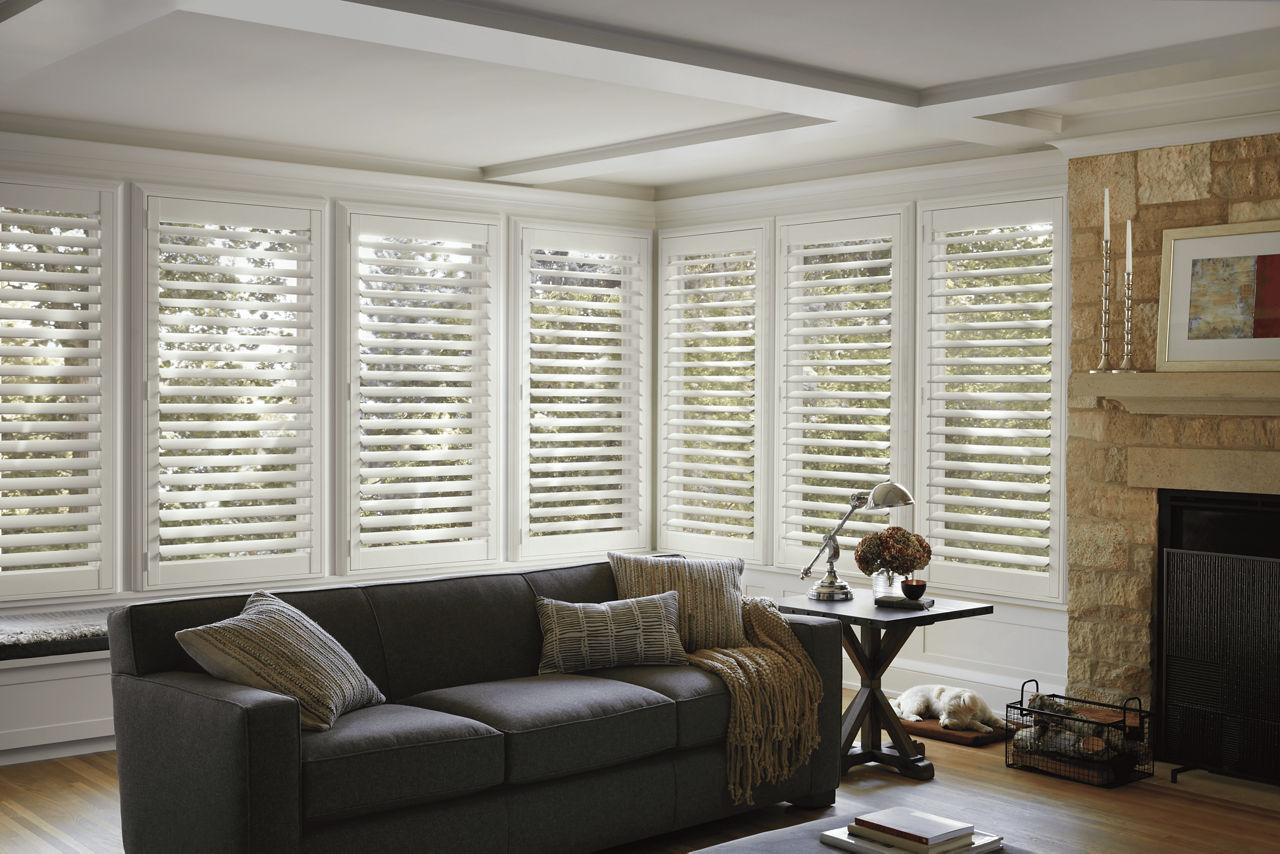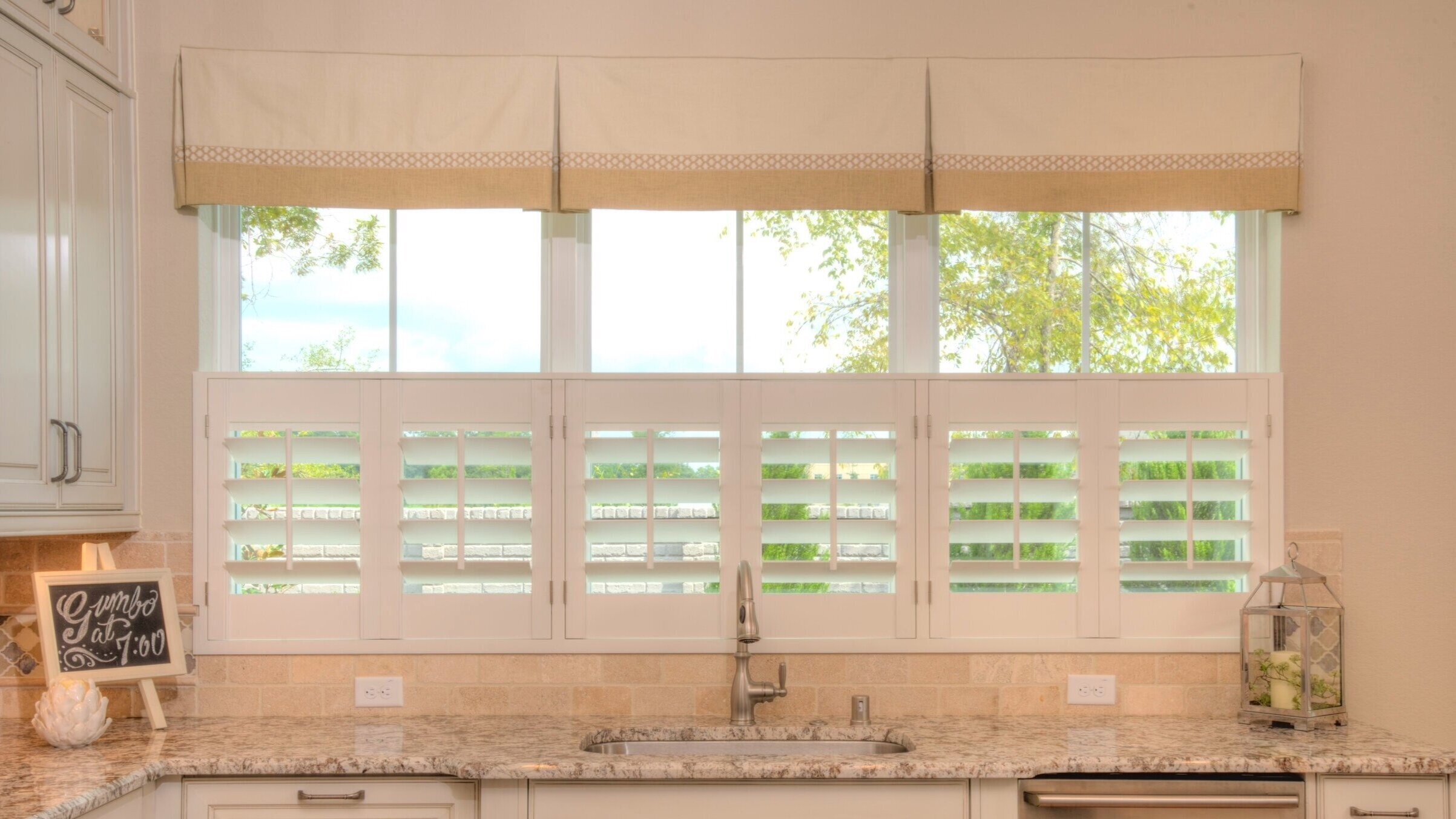What to Think about When Choosing Between Blinds and Shutters for Your Windows: A Detailed Evaluation of Each Alternative's Benefits
Picking the right home window therapy is a choice that transcends simple looks; it incorporates performance, maintenance, and long-term financial investment. Blinds offer a cost-effective and adaptable remedy, while shutters provide unmatched longevity and style.
Key Differences In Between Shutters and blinds
Frequently, home owners discover themselves pondering in between blinds and shutters when choosing window treatments. Understanding the essential differences between these two alternatives can substantially affect their decision-making procedure.
Blinds are generally made from materials such as wood, fake wood, light weight aluminum, or vinyl. They contain straight or upright slats that can be gotten used to manage light and personal privacy. The versatility of blinds enables a vast array of sizes, colors, and designs, making them suitable for various area aesthetics. Blinds are frequently extra affordable, appealing to budget-conscious homeowners.
In comparison, shutters are solid home window treatments that can be custom-fitted to the home window structure. Shutters provide much better insulation and can boost the overall power efficiency of a home.

Benefits of Blinds
Blinds provide a versatile and useful option for homeowners looking for efficient home window treatments. One of the key benefits of blinds is their versatility to numerous styles and choices.
One more substantial benefit of blinds is their convenience of operation. Numerous modern-day blinds come with easy to use systems, consisting of mechanized systems and cordless alternatives, making them obtainable for every ages. This ease is improved by their capacity to provide accurate light control, allowing homeowners to quickly readjust the level of sunlight entering a space.
Blinds additionally provide excellent personal privacy choices, as they can be totally opened, partially tilted, or totally shut, depending upon the preferred degree of seclusion. Additionally, they are typically much more cost-efficient than shutters, offering an affordable service without compromising design or capability. Maintenance is simple, as a lot of blinds can be cleansed with a basic wipe-down, guaranteeing that they continue to be an eye-catching attribute in any type of home for years to come.
Advantages of Shutters
Shutters provide a distinct collection of benefits that make them an attractive choice for house owners seeking durable and elegant home window treatments. Among the key advantages of shutters is their extraordinary toughness - motorized blinds phoenix. Created from durable products such as timber, plastic, or composite, they are developed to stand up to the examination of time and withstand damages from UV rays, moisture, and temperature level changes

Shutters additionally offer enhanced personal privacy and light control. Home owners can conveniently change the slats to attain the preferred level of brightness while keeping privacy from the outside. Unlike blinds, which may sag or flex in time, shutters preserve their shape and capability.
Additionally, shutters can raise the value of a residential or commercial property (window treatments phoenix). Their timeless aesthetic and sturdiness appeal to possible buyers, making them a beneficial investment. In summary, the resilience, power effectiveness, personal privacy control, and potential for boosted residential or commercial property value make shutters a compelling alternative for window treatments
Visual Considerations
When choosing home window therapies, aesthetic considerations play a crucial role in improving the total layout and atmosphere of a space. Both window shades phoenix blinds and shutters supply distinctive visual features that can match different interior designs, from contemporary to standard.
Blinds generally give a smooth, minimalist appearance, quickly offered in a range of colors and materials. This versatility enables home owners to coordinate blinds with existing style, developing a unified look. Their straight or vertical slats can add a contemporary edge, making them ideal for urban setups.
In contrast, shutters radiate a classic style that boosts rustic and typical interiors. Their strong framework and adjustable coatings, such as wood spots or repainted alternatives, stimulate a sense of timelessness. Shutters can offer as a declaration item, drawing attention to the window while using a high end visual.
Eventually, the choice in between blinds and shutters ought to mirror not only personal style however also the desired atmosphere of the room. By very carefully taking into consideration you could try this out just how each option lines up with the general design vision, house owners can effectively boost their room's visual charm, making sure a harmonious and inviting atmosphere.
Cost and Maintenance Aspects
When their website choosing between blinds and shutters for window therapies,Cost and upkeep are essential facets to consider. Blinds are usually extra economical, with a large range of choices offered at various rate factors. Fundamental fabric or plastic blinds can be rather cost effective, while costs products like wood can boost the price. Installment is typically uncomplicated, commonly permitting DIY approaches, which may further decrease expenditures.
In contrast, shutters often tend to carry a higher preliminary price because of their custom-made manufacturing and durable building. However, this financial investment may produce long-term financial savings, as shutters are typically more durable and call for less constant substitute. They additionally offer remarkable insulation, possibly reducing power bills with time.
Maintenance plays a substantial role in the overall price of window therapies. Blinds generally require routine dusting and periodic cleaning, while shutters can be wiped down with a damp towel for cleaning, making them much easier to keep. Additionally, shutters are less prone to harm from UV rays and dampness, adding to their durability. Ultimately, the option between shutters and blinds ought to stabilize both preliminary financial investment and recurring upkeep needs to make sure a sufficient roi.
Verdict

Blinds provide a adaptable and cost-effective service, while shutters supply unequaled sturdiness and design.Cost and maintenance are essential elements to take into consideration when choosing in between blinds and shutters for home window therapies. Blinds typically require routine dusting and occasional washing, while shutters can be wiped down with a moist cloth for cleaning, making them much easier to keep. Inevitably, the selection between shutters and blinds must stabilize both first investment and recurring upkeep requires to make sure an adequate return on financial investment.
In recap, the choice in between shutters and blinds hinges on numerous aspects, consisting of product structure, design adaptability, and price.